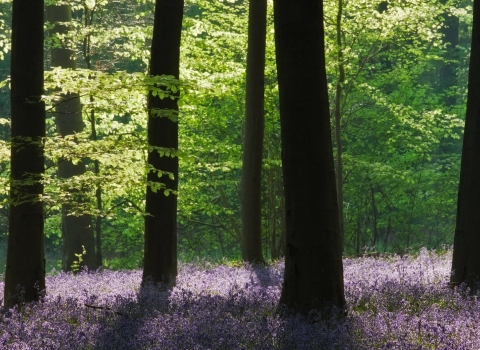In Gloucestershire there are approximately 850 Local Wildlife Sites which contribute to our vision for a Living Landscape.
What are Local Wildlife Sites?
Local Wildlife Sites are areas with a rich diversity of habitats that provide refuges and corridors for wildlife across Gloucestershire.
They are found on both public and private land and include a great variety of valuable semi-natural habitats such as ancient woodland, species-rich grasslands, river valleys, heathland and hedgerows.
These sites have no legal protection, yet they still deserve recognition as the most important places for wildlife outside of legally protected land such as Sites of Special Scientific Interest (SSSI).
In Gloucestershire there are approximately 850 Local Wildlife Sites which contribute to our vision for a Living Landscape.
Why they are important?
Threats to wildlife come from various sources: development proposals, new roads, changes in land ownership, inappropriate management and even neglect. These all reduce the species and habitat diversity which the county supports.
Gloucestershire Wildlife Trust has been working with farmers, landowners and local authorities to ensure that land management across the county is wildlife friendly.
How are sites selected?
Sites are selected by a panel of experts who assess the conservation interest against a set of thoroughly developed criteria, which are based on national priorities but also interpreted at a local level. Consideration is given to both the habitats and species present.
What are the implications for owners of Local Wildlife Sites?
The identification of an area of land as a Local Wildlife Site does not compel a landowner to do anything, and nor does it restrict them. However, it does mean that they may be able to get free advice on the future management of the land, and it can also help in attracting funding from a number of land management grant schemes.
Who holds the information?
All data relating to Local Wildlife Sites is held by the Gloucestershire Wildlife Trust and by the Gloucestershire Centre for Environmental Records.
Site designation process
If you are a landowner or are aware of an area which you think should be designated, please contact us.
For your guidance please follow the procedure below:
If you are a landowner who owns a site with natural or semi-natural habitat:
1. When you contact us please provide either a map of the site or a central grid reference. A species list and details of any notable habitats on the site would also be useful.
2. If the site is already designated we may be able to provide further information (e.g. past botanical survey, etc.) regarding the site.
3. If the site is not designated we might be able to arrange a visit between spring and autumn to assess the site.
4. Following the survey the site will be assessed against the KWS Criteria, and, if the quality of the site is sufficiently high, it will be sent to the Site Selection Panel for consideration. This procedure might take 3 to 6 months.
5. Whether the site becomes designated or not you will be provided with a detailed report free of charge. This report highlights notable habitat and species (those recorded in the past and any additional ones noted during the current survey). The report also provides management recommendations for maintenance and enhancement of these habitats.
6. We may be able to offer special surveys on your land (e.g. invertebrates, water vole etc.) in the future, if you wish.
If you have found a site which you think should be a KWS, but you are not the landowner please still contact us, so we can inform you whether the site has already been designated.

